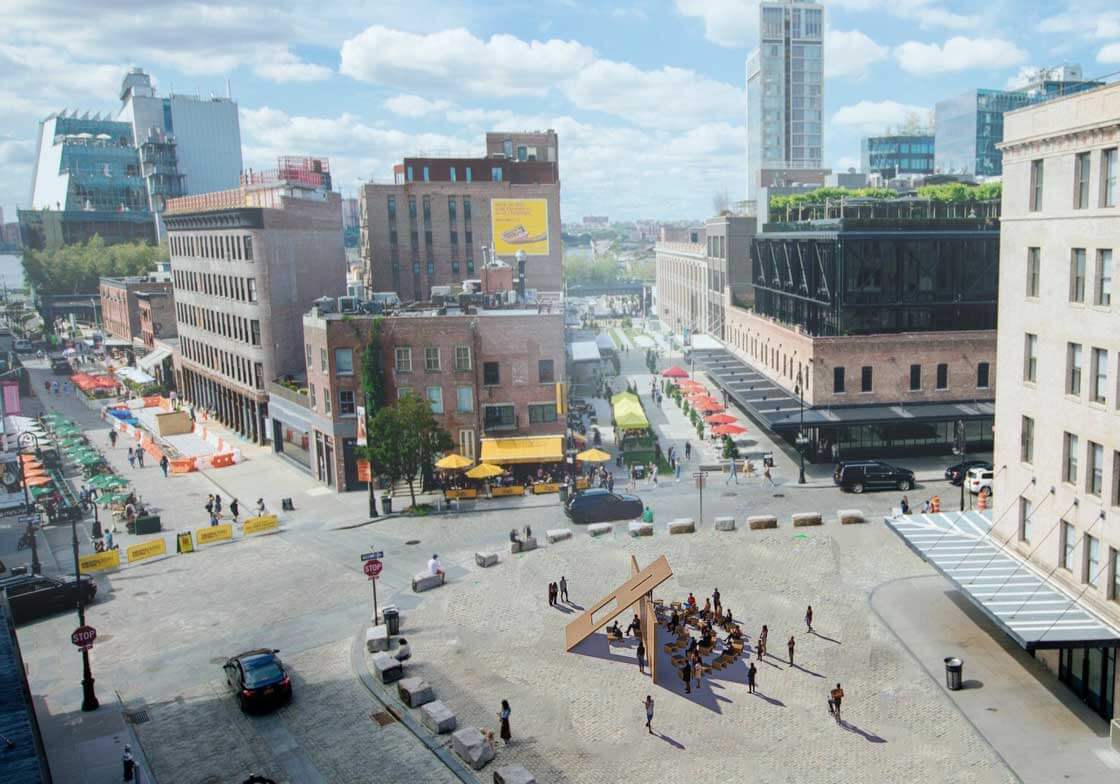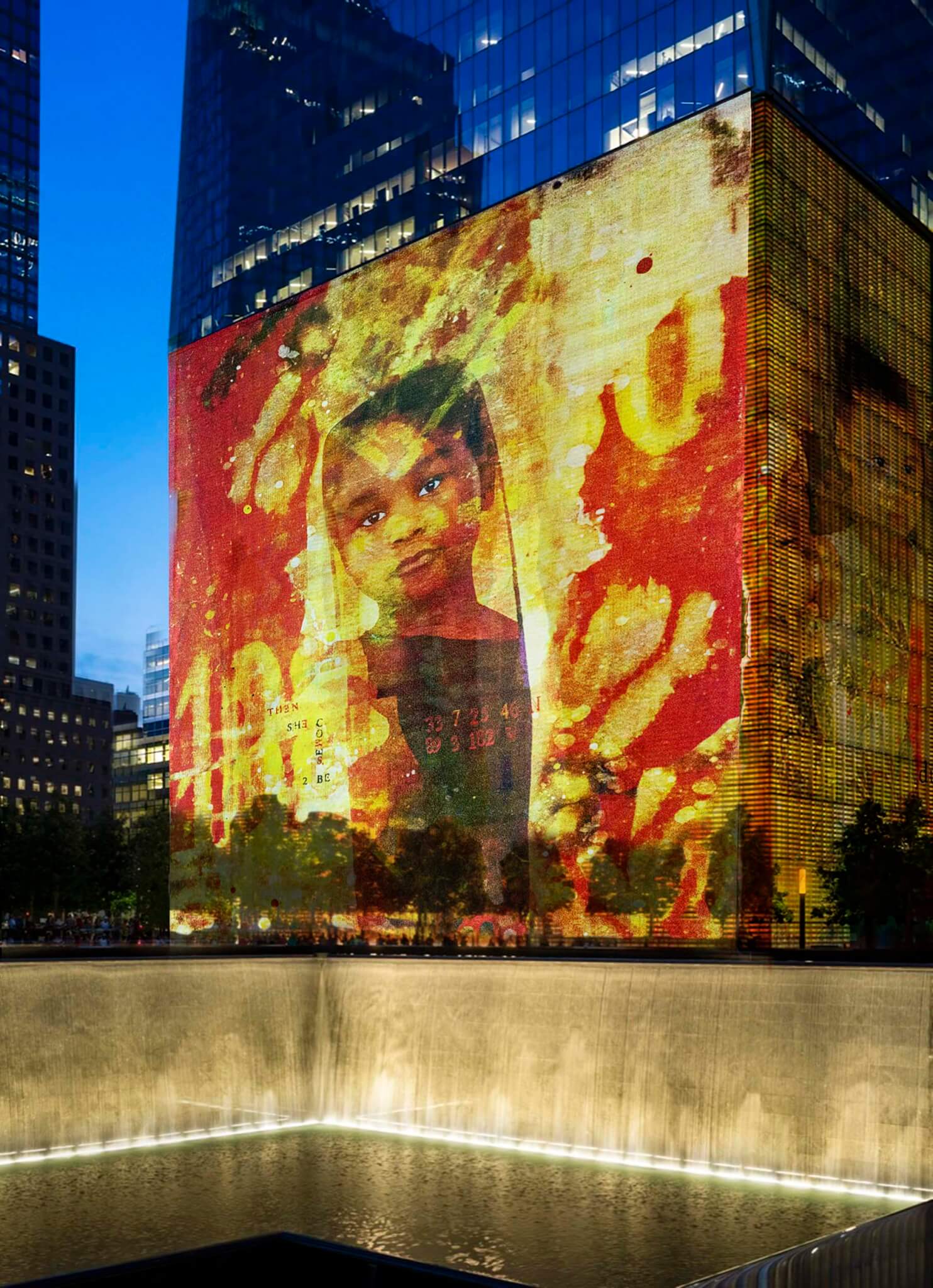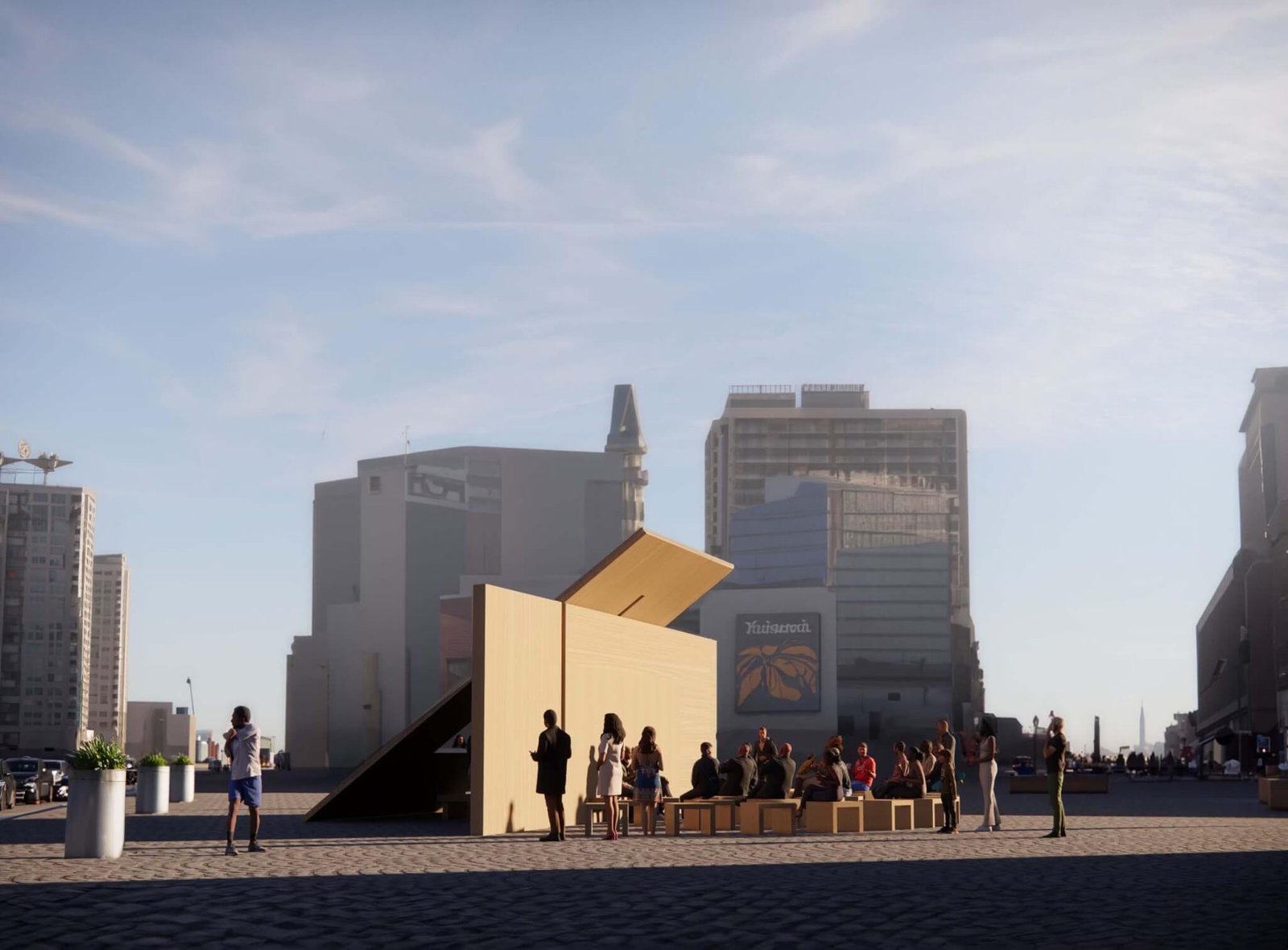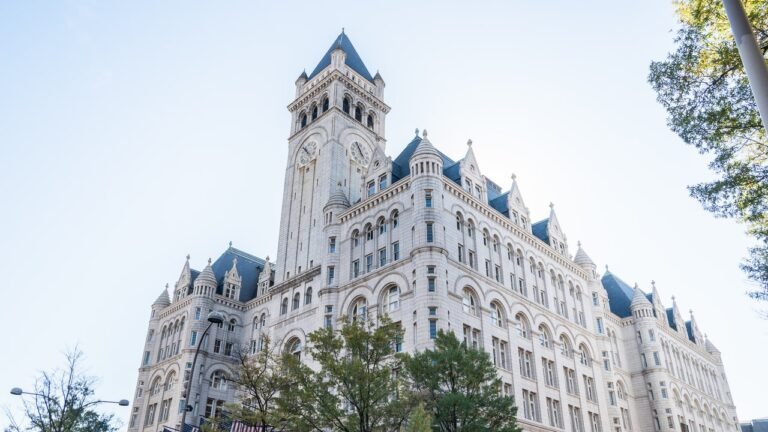Three installations centering sustainability and social justice will be staged across Manhattan as part of NYCxDESIGN’s Design Pavilion
A nest of bamboo strips, a cross-laminated timber (CLT) structure by a former NFL player, and a poignant digital projection commemorating lost American history are three installations staged at sites across New York City this month as part of NYCxDESIGN’s Design Pavilion, coinciding with Archtober.
Design Pavilion opens to the public on October 12. The three locations for the public-forward activations will play host to a variety of programming, among this a return of the organization’s Design Talks series. This year’s topic of discussion centers on sustainability, in particular how to eliminate waste and the circular economy.

The first of the three pavilions, Bamboo Cloud, is located in Hudson River Park at West 16th Street and was designed by Shanghai-based architects llLab. Its organic shape of criss-crossing bamboo strips forms a roof propped up by a series of wood poles and round bases. The designers worked with architectural lighting studio L’Observatoire International and supplier Nanometer Lighting Color Kinetics to illuminate the structure from within, lighting up Hudson River Park.
“The Bamboo Cloud defines a temporary new space offering visitors a seat under its playful game of light and shadow, to contemplate the beautiful views of the river. Its materiality spreads a golden light that marks this Hudson River Pier,” said Hanxiao Liu, cofounding partner at llLab in a press release.
Michael Bennett, former NFL defensive end, now founding principal and creative director at Studio Kër, has conceived a pavilion design using cross-laminated timber (CLT). Situated in Gansevoort Plaza, Public Display leans a slab of CLT against a similar, horizontal wooden slab to form a backdrop for the Design Talk series. Moveable stools circle the structure, forming a flexible seating arrangement for the events slated to take place there.

“Public Display is a tribute to our environment, with a commitment to sustainability and an artistic presentation. Plus, the space offers a series of community conversations. To listen is to love, so we create sacred space to listen,” Bennett said.
The third and final installation I Was Here highlights previously unknown historical figures and histories through a series of digital projections on the World Trade Center Podium. Artist Marjorie Guyon worked with Marc Aptakin, Roy Husdell, and Yoel Meneses of Yes We Are Mad on Ancestor Spirit Portraits, a collection of video and animated portraits. The installation depicts individuals with ties to the country’s history of enslavement. In locating the work at the World Trade Center, the designers have placed it near what was the country’s second largest auction site for enslaved Africans.

“When I was three, I took the ferry and climbed to the very top of Lady Liberty to see the land and sea through her eyes. Like the Statue of Liberty, the Ancestor Spirit Portraits of the I Was Here project are iconic – their presence allowing our city, our country, and our world to see through their sacred, ancient eyes,” said Guyon.
The three design pavilions open to the public on October 12. More information about the designs and details pertaining to their programming schedule can be found here.




